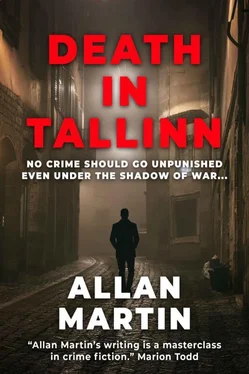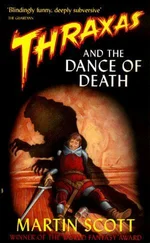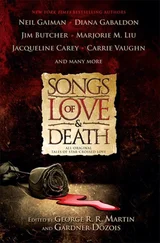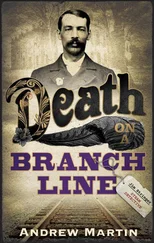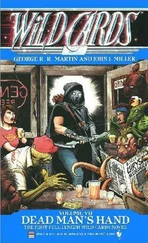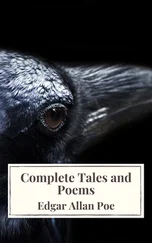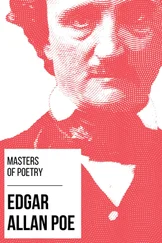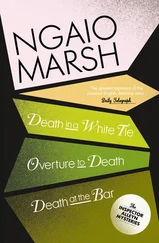He thought he might find Artur down there, but the place was empty. He pulled one of the bound sets of newspapers from the shelves. Each volume contained all the editions for a month. 156 volumes. Approximately. This was going to be a long afternoon.
An hour later Artur arrived. “Sorry I’m late,” he said, “I had to get my folklore piece in. About weather predictions. Do you know there’s a man in Ruhnu who…”
“Yeah, yeah. Checks his seaweed every morning. Or something like that. You know what that stuff’s called, Artur? A novelty filler. Light-hearted bit of junk that takes people’s minds off the real news for a few moments, lets their brains idle for a bit. Do you know what sells papers, Artur?”
“Well, news, I suppose.”
“Wrong. Number one, excitement. Number two, entertainment. Without them, we can print as much news as we like and nobody would buy a single copy. That’s why we have to make sure the news is either exciting or entertaining. That doesn’t mean making it up, it has to be real news. But it means finding an angle that makes people want to read it. That must be quite a challenge with agriculture and folklore. But doesn’t mean you shouldn’t try. Did the man in Ruhnu ever save a life?”
“He did stop a ferry sailing when he predicted a storm. Twenty people could have died if it had sailed. The storm came just when he said it would, and the meteorologists hadn’t spotted it at all.”
“That’s your angle, Artur. ‘Twenty lives saved by seaweed!’ That’ll get people reading.”
“But that was in 1906.”
“That doesn’t matter. Once folk are hooked on the story they won’t care that it happened a while back. Anyway, my angle for tomorrow is ‘Vaher, the man who put away villains.’ Retrospective on his past successes, and controversy over his methods. Not too much, mind. People don’t want to have to think too hard. But first we need to check out the details.”
Artur groaned. “Do we have to go through every single page of all these volumes? It’ll take a week.”
“People think journalists are disorganised, and drunk most of the time. But the first bit of that’s wrong. The best journalists are the best organised, because they can put their finger on information, when others can’t.” He tapped a file that lay on the table in front of him. “See this file, in here is a list of all the pieces I’ve ever written for this paper, indexed for names and types of crime. So we don’t need to look at every page, we just need to find the serious crimes handled by Vaher, and extract those details. Then I can put something together. So, I started by making a list of dates and victims. We’ll take half each, find the articles, and extract the information. Then you can leave it with me, and I’ll write the article.”
10
Back at Police HQ, Hallmets found that Eva Larsson and Oleg Maslov were waiting to meet him in the work-room next to his office. Larsson was of medium height, with blond hair tied in a braid at the back of her head, and a serious expression. She wore a blouse and skirt of a pale green colour. Maslov was bear-like, his dark beard badly-shaved, and a broad smile on his face. He wore an ill-fitting brown suit, perhaps borrowed. Hallmets, after the introductions, asked them, together with Kadakas, to come into his office. He asked Marta to bring coffee.
Hallmets began. “Thank you for coming here so promptly. You know why you’re here?”
“I was told officers from outwith the capital were required to investigate the death of a policeman,” said Larsson, “I didn’t realise till I saw the newspaper that it was Vaher.” She spoke slowly with the accent of the Baltic islands.
“You met him?” asked Hallmets.
“Only briefly, Sir. At a police shooting competition. He didn’t speak to me, but made his opinions of women in the police force clear to one of my colleagues. Rolling pins were the proper weapons for women, he said. I don’t suppose he was very pleased when I won.”
Maslov laughed loudly. “Me, I never met him, boss. But I heard of his methods. More Russian than Estonian, eh?” He spoke with only a slight Russian accent.
“We’re going to have to work hard on this,” said Hallmets, “Our biggest disadvantage is that we’ve no feel for the crime scene here in Tallinn. At some point we’ll have to bring in one or two of the local CID people, but I’d rather leave that until we know who’s worth having. So for the moment it’s just us. The post-mortem is at six and that’ll certainly move us on, even if it only confirms he fell from the viewpoint. Assuming that’s the case, however, we still don’t know whether he jumped, was pushed, or tripped.”
“So we can’t be sure that it was murder, and not suicide?” said Larsson.
“That’s correct. It’s tempting to see this as a revenge thing by somebody he put away for a good stretch, but we have to remember that the largest number of murders are family affairs. We mustn’t exclude the possibility that he was killed by a relative or even a colleague.”
“A colleague! Surely that’s impossible! Sir!” said Kadakas.
“It may be unlikely, lieutenant, but that doesn’t make it impossible. That’s why you’ll find that a lot of CID work is negative, ruling things out rather than ruling them in. But if you know what it’s not, that helps point you towards what it is.”
“He could have been involved in something else,” said Larsson, “ Other than family or police stuff.”
“Good point. We need to form a picture of Vaher’s day-to-day existence. Somewhere in his life is the cause of his death. It’s a big job for just four of us. So, I suggest that the three of you familiarise yourself with the paperwork that we’ve got so far. Then we’ll all go to the meeting at five with the local CID people. After the meeting, Larsson and Maslov, you go and eat in the canteen, get chatting to people, see how they felt about Vaher. Kadakas, the uniform won’t help you blend in there, so you come with me to the post-mortem. Let’s meet again here at seven.”
After the others left, Marta brought in Vaher’s personnel file and a sealed envelope just delivered by a messenger from the Ministry.
He began with the personnel file. Nikolai Vaher was born in 1895 on a farm near the village of Sonda, in Ida-Viru county, to the East of Tallinn. He was educated at the village school in Sonda and at the secondary school in Narva. He left school at fifteen and returned to the farm. He was nineteen when the World War began, and managed to avoid conscription into the Russian army until May 1916. But the army seemed to suit him, for within a year he had risen to the rank of sergeant. He returned home, as many Estonians did, when the Bolsheviks seized power, and soon found himself in the new Estonian army, ending the War of Independence as a captain. After the war, in 1920, he joined the fledgling police force, and became a CID officer in Tallinn. He was there during the attempted coup by the communists in 1924. In 1925 he moved to Narva as a detective inspector, and in 1930 returned to Tallinn as Chief Inspector and second-in-command of the CID.
Hallmets hoped that the file from Reinart would add some meat to these bones. He broke the seal and extracted a thin folder from the envelope. Stamped on the front in red were the words “Restricted file – only to be read by…” – and his own name written in. But inside were only three sheets of thick paper with a smooth, almost shiny, surface. The Ministry had invested in one of the new photostatic copying machines, and this cumbersome apparatus had been used to copy excerpts from various documents. Unfortunately, the header information had been covered up on each document, so its origin or author was not shown.
Читать дальше
